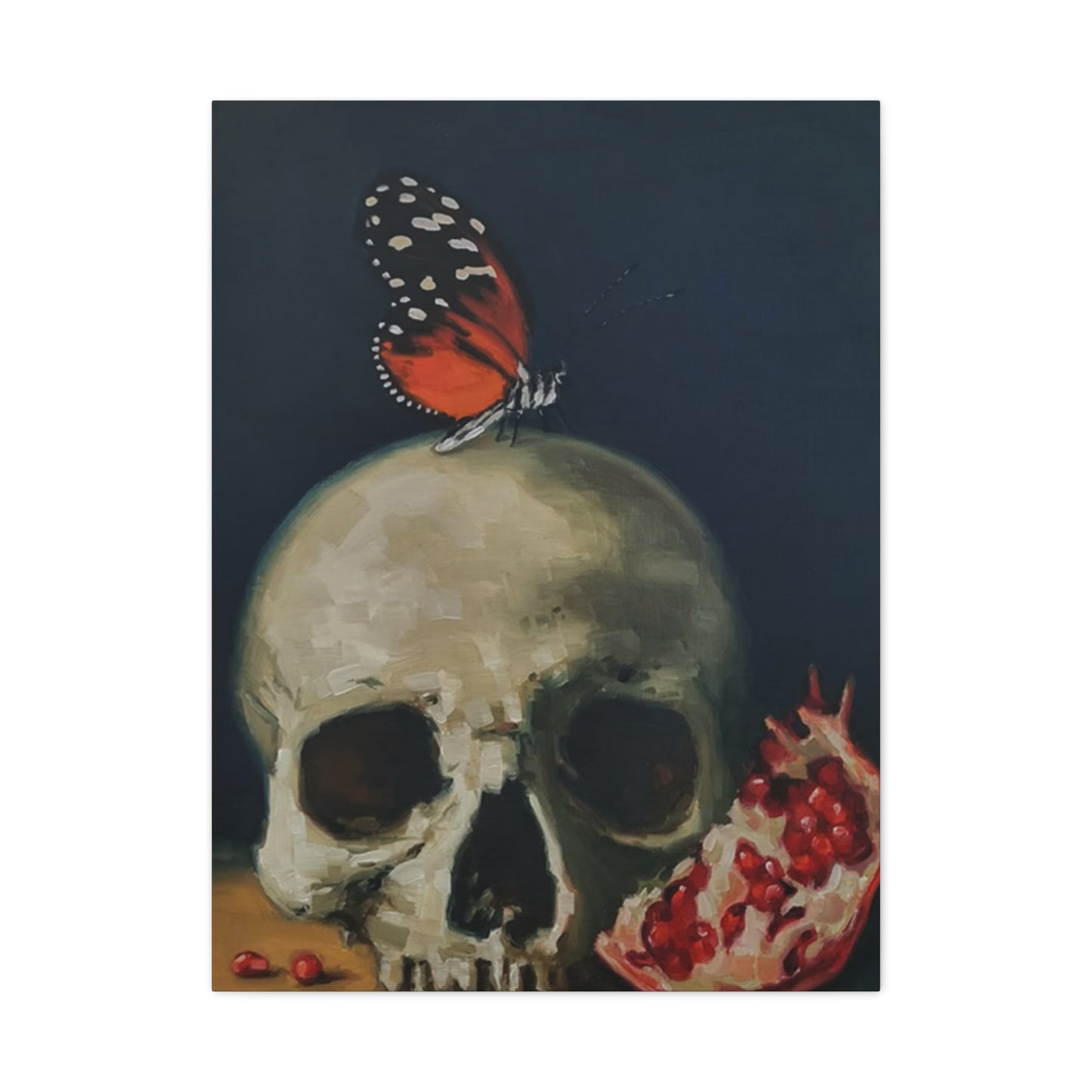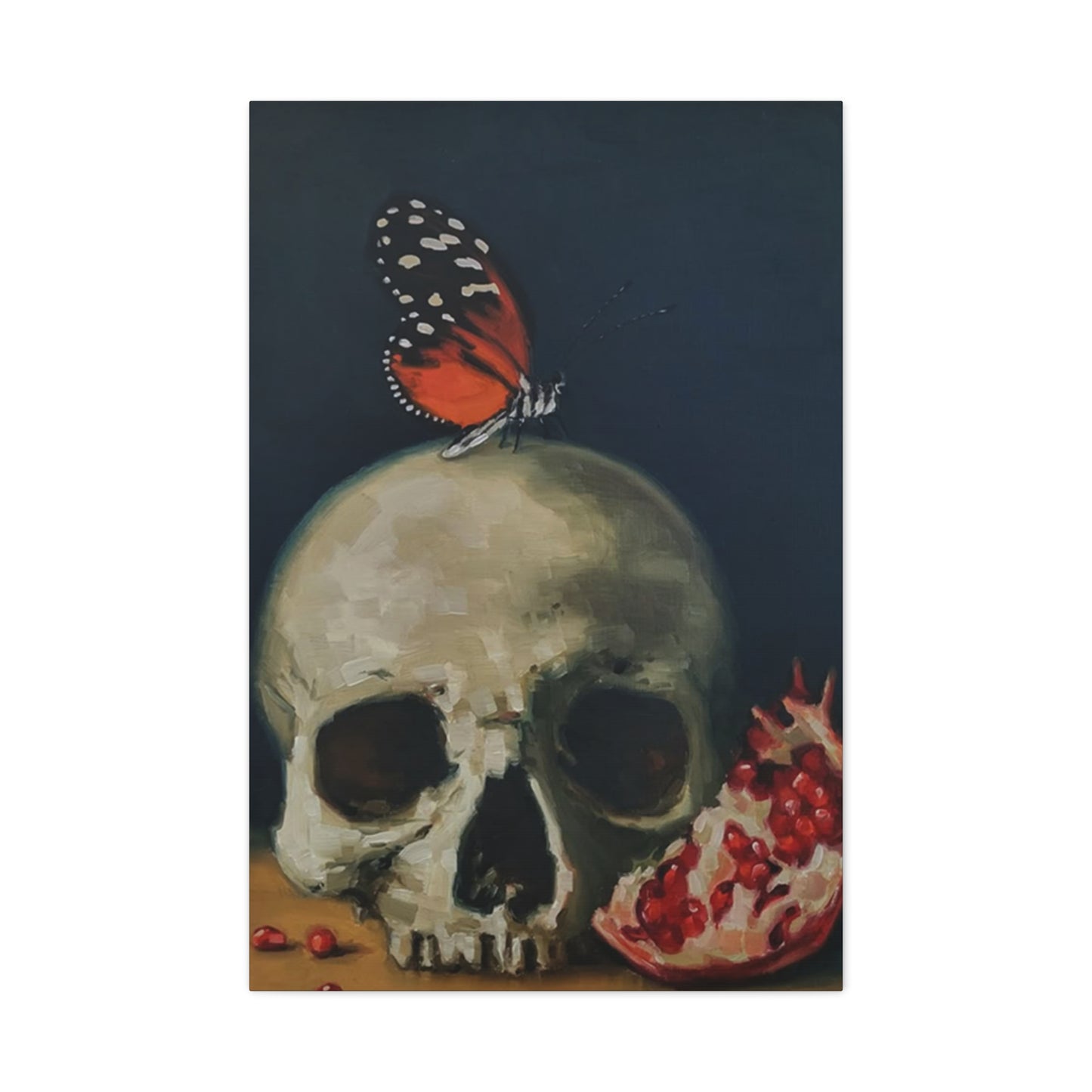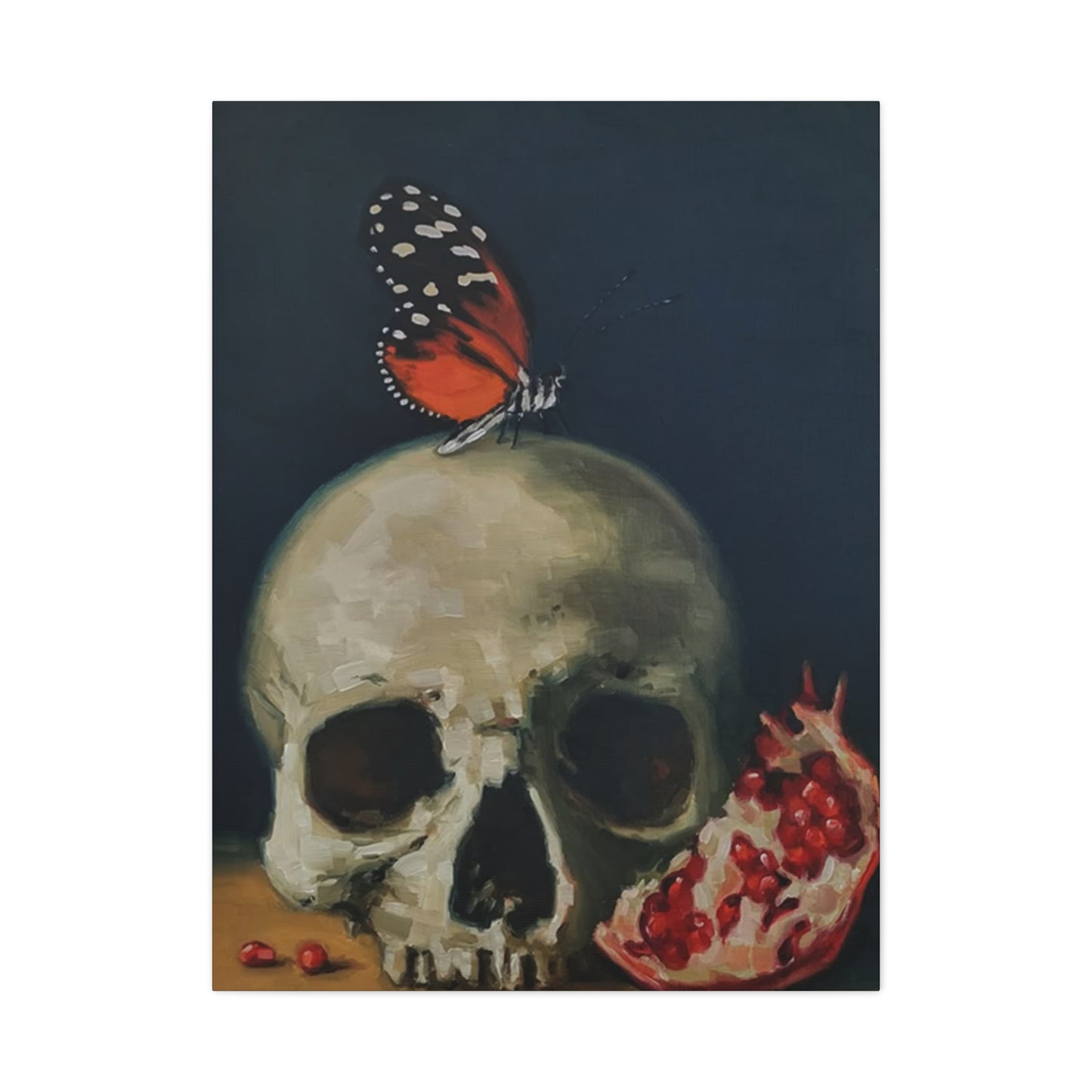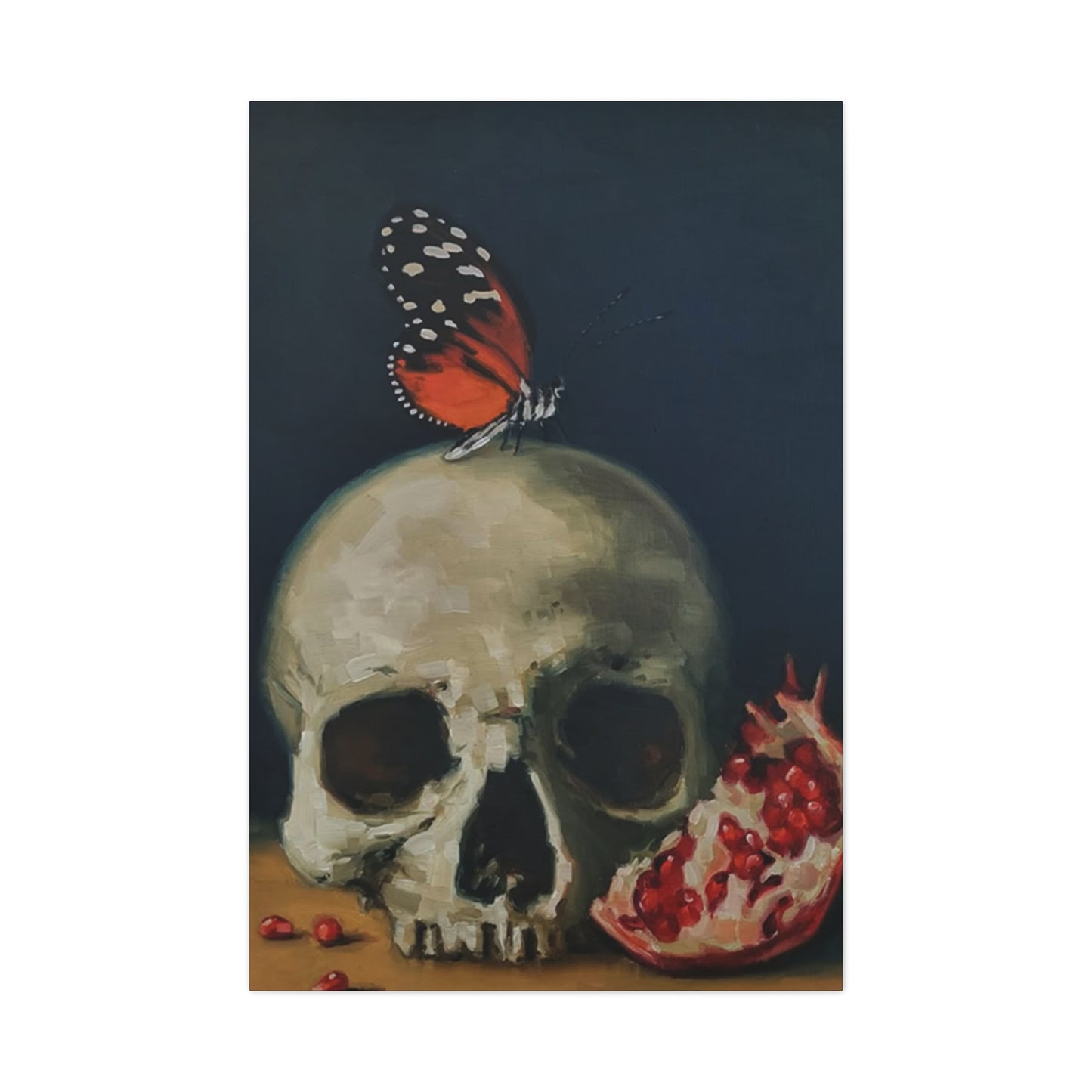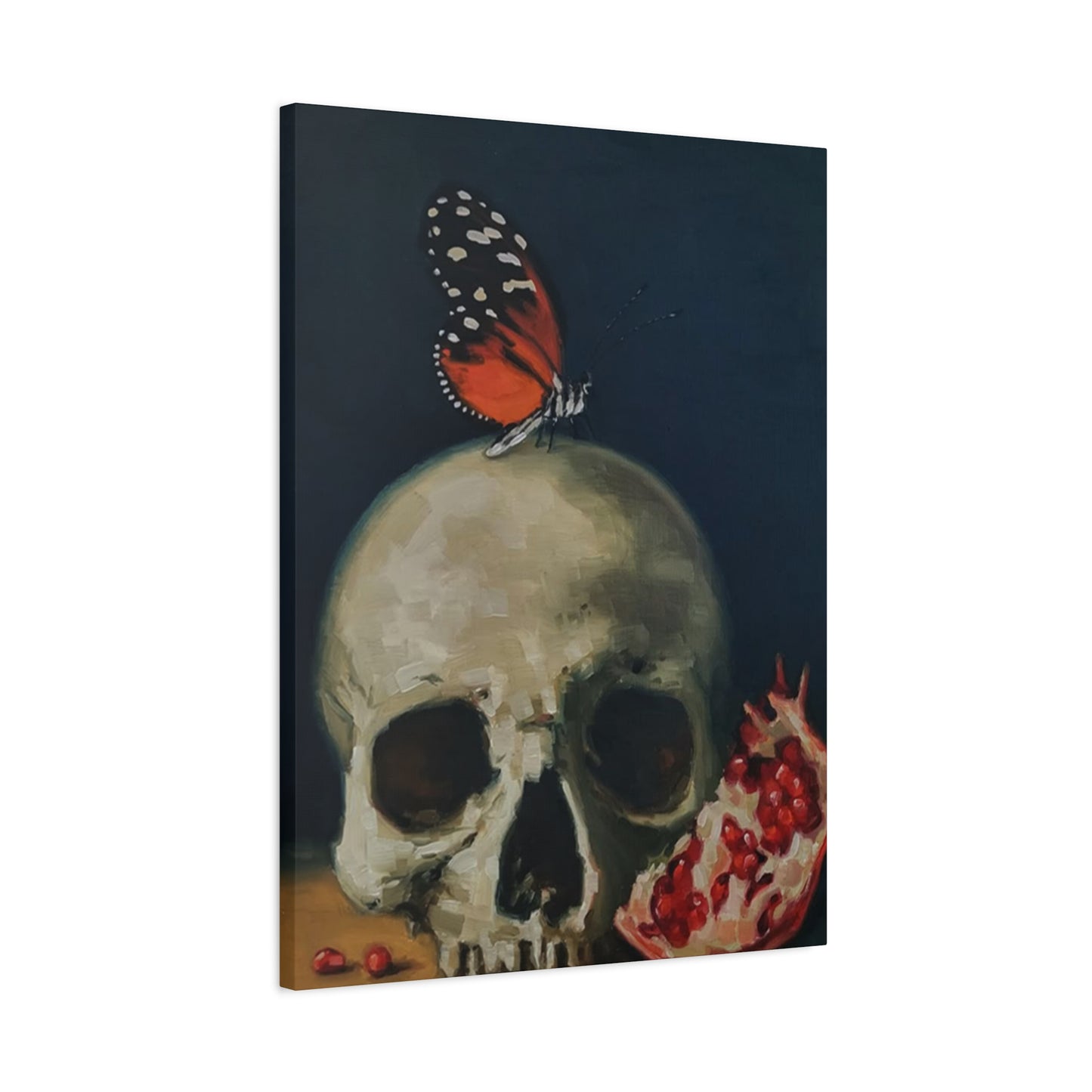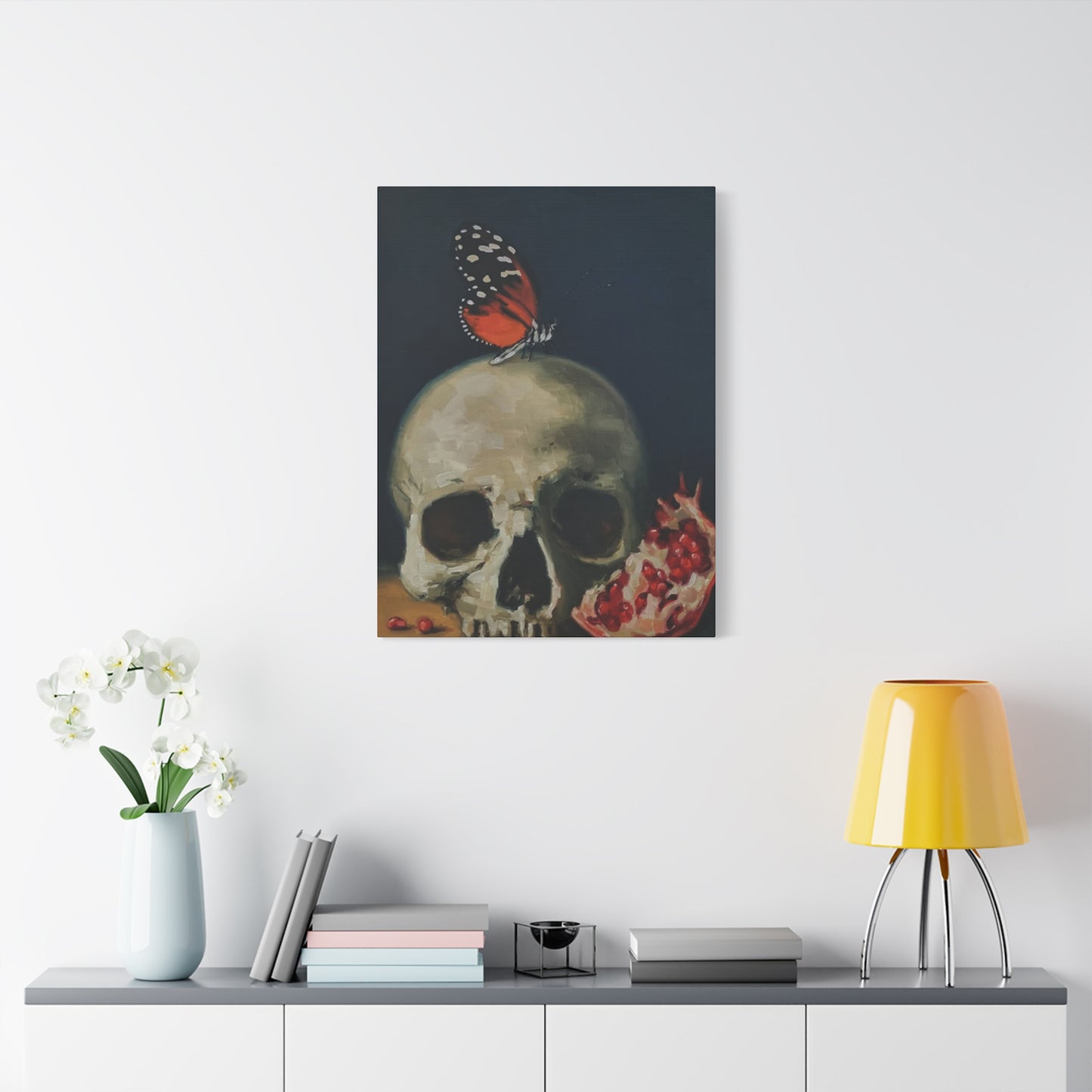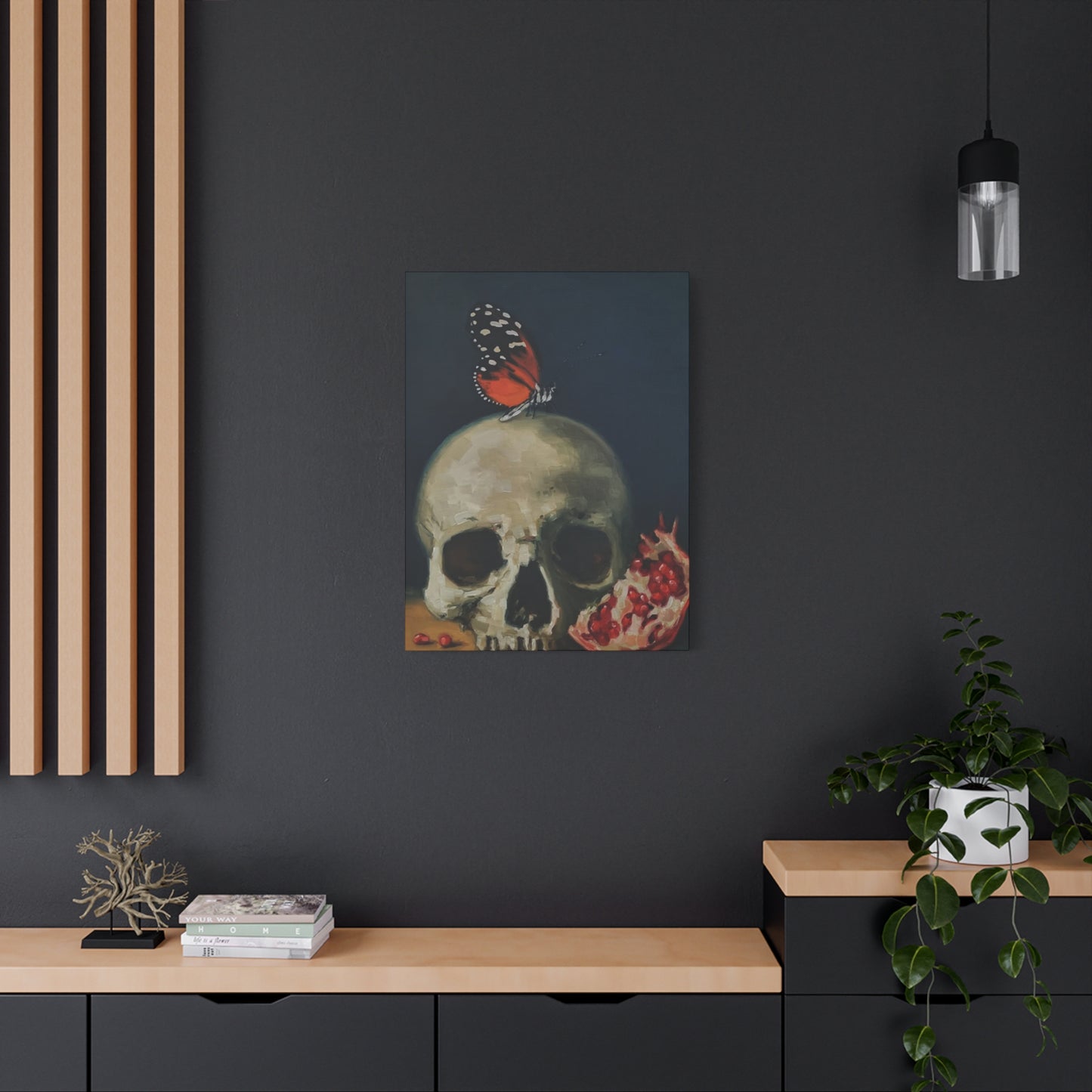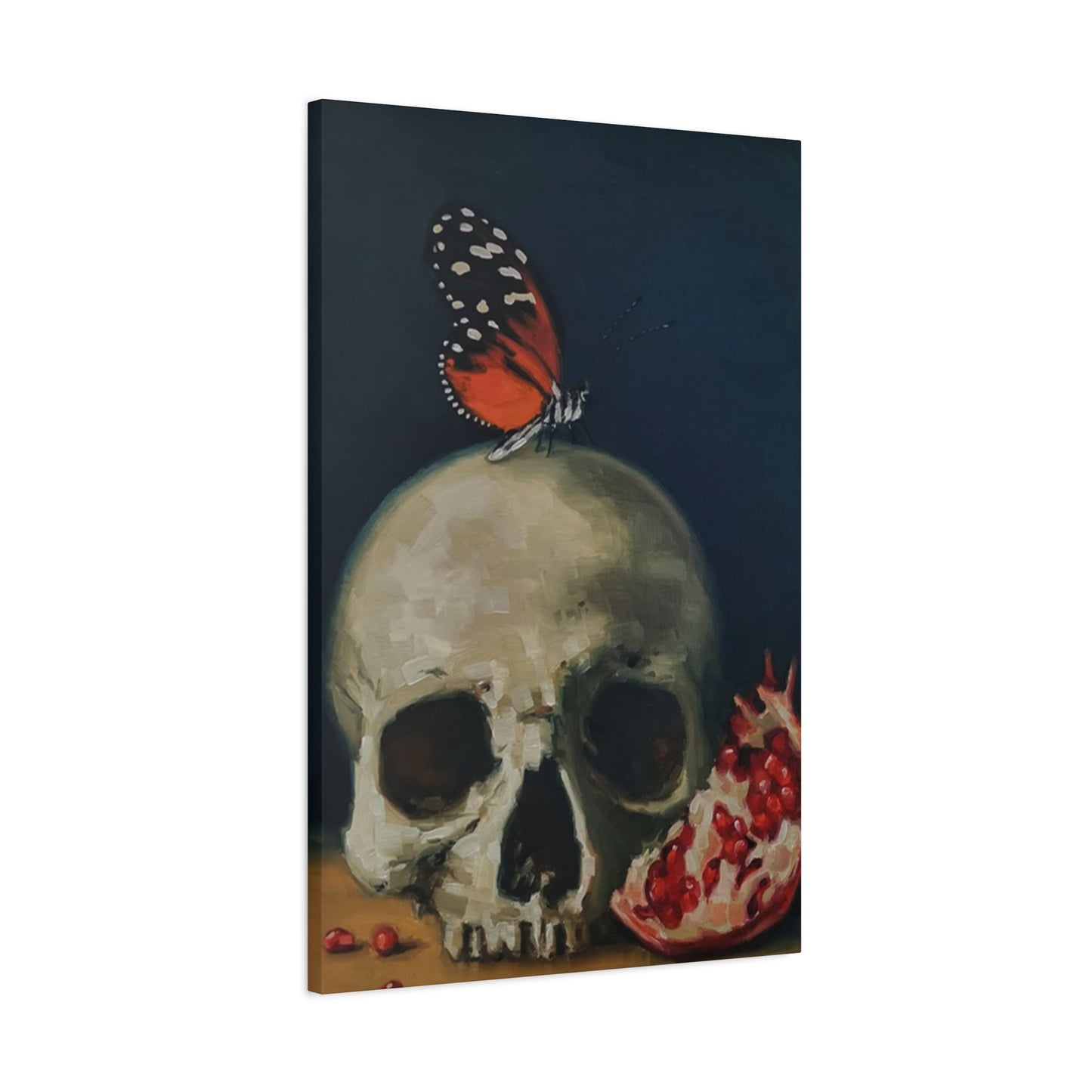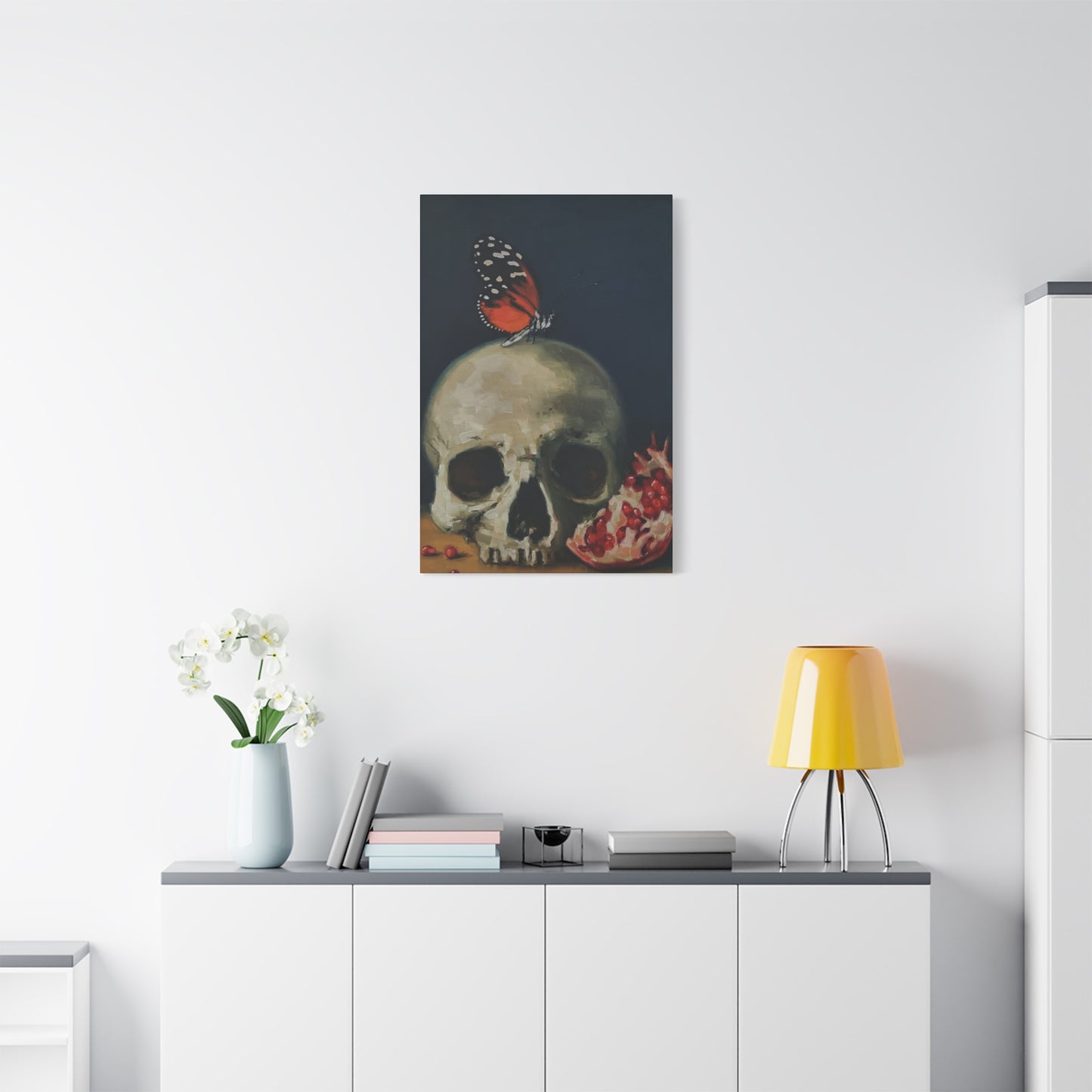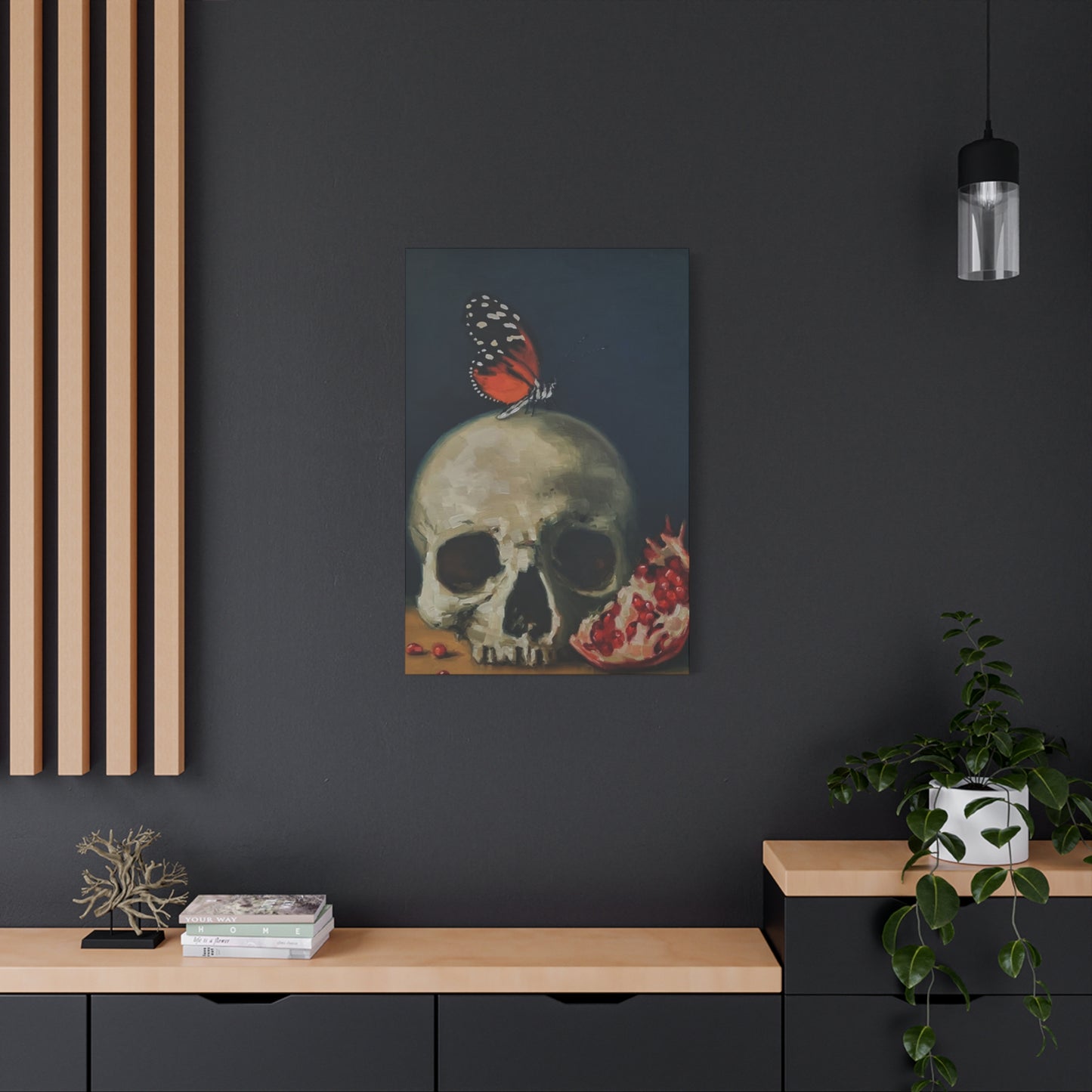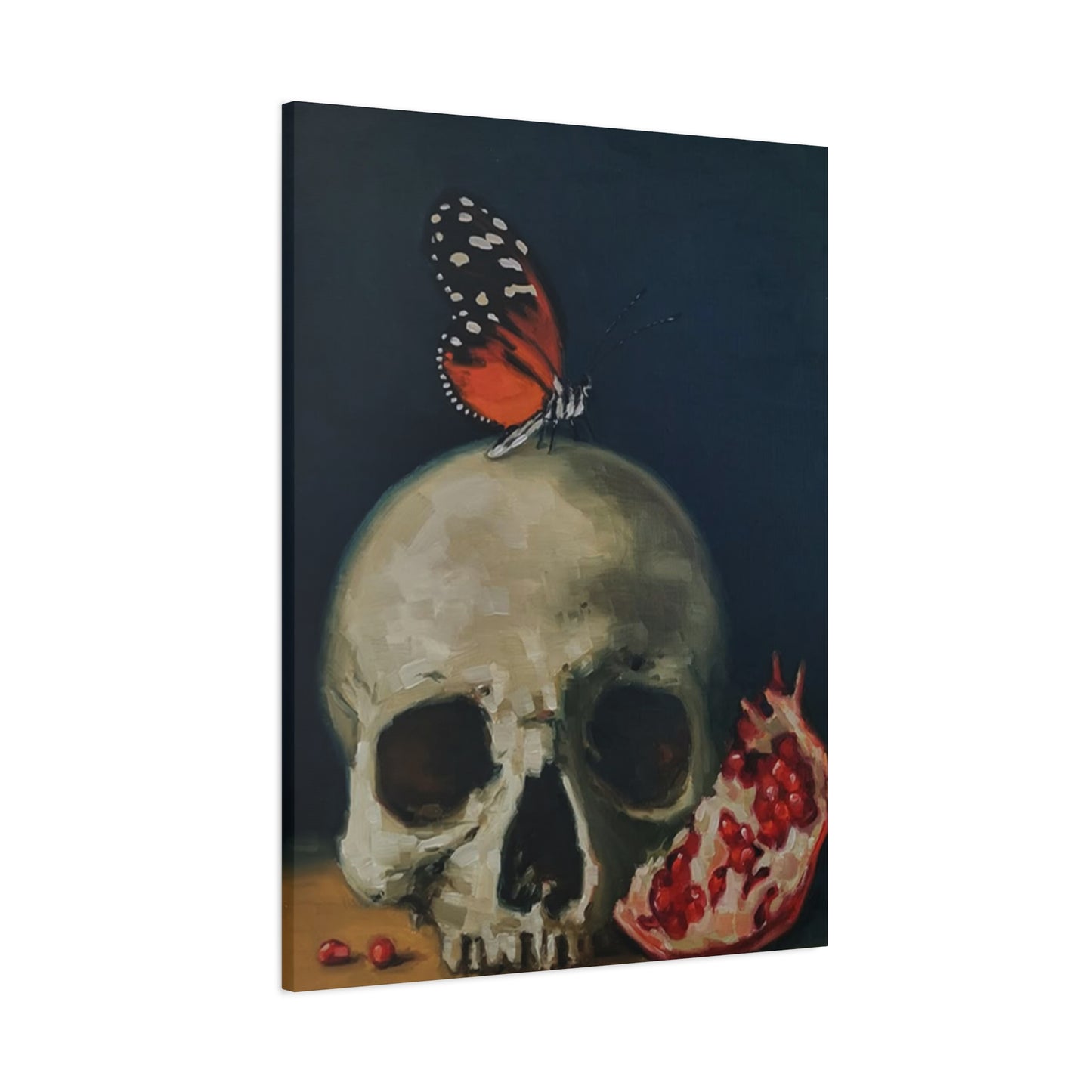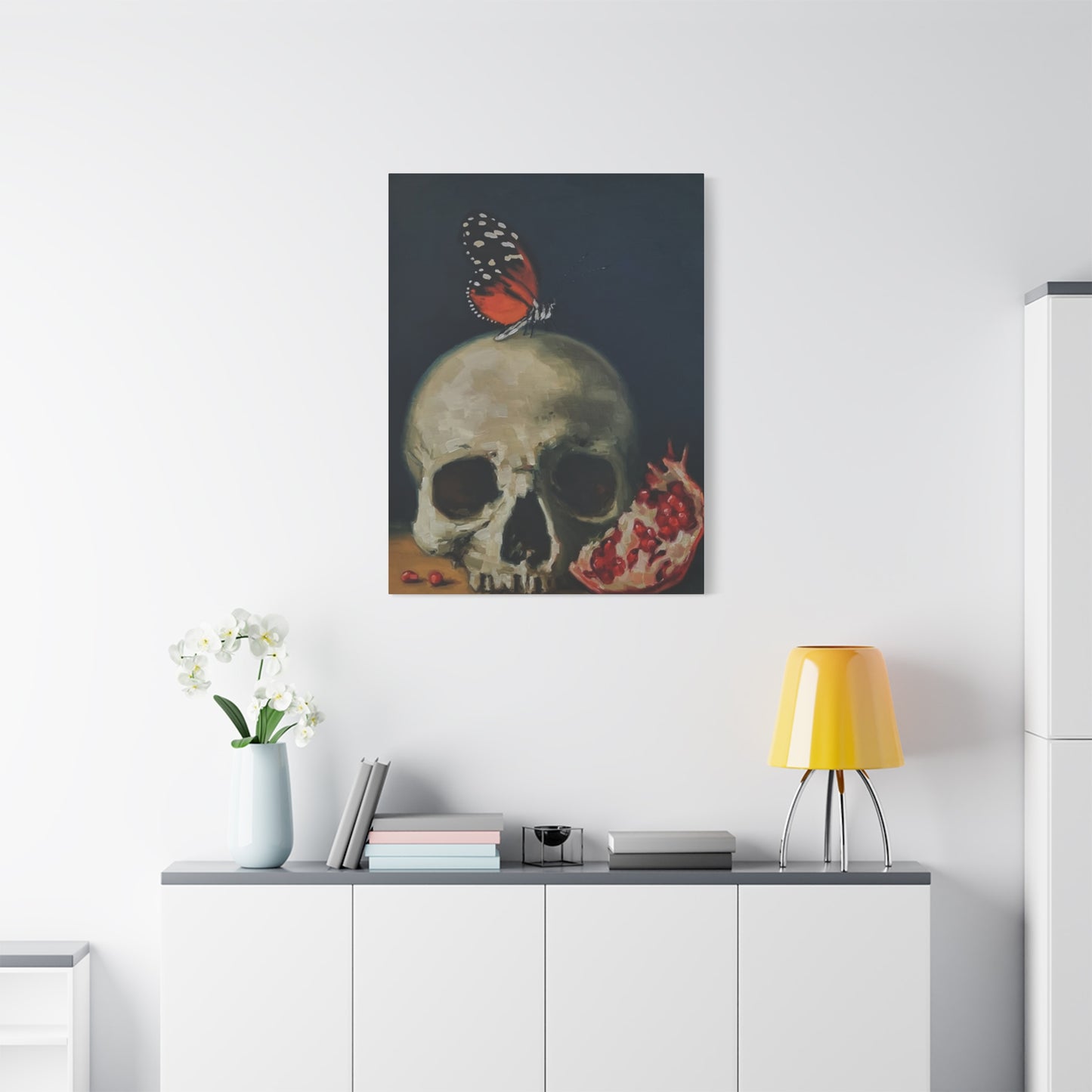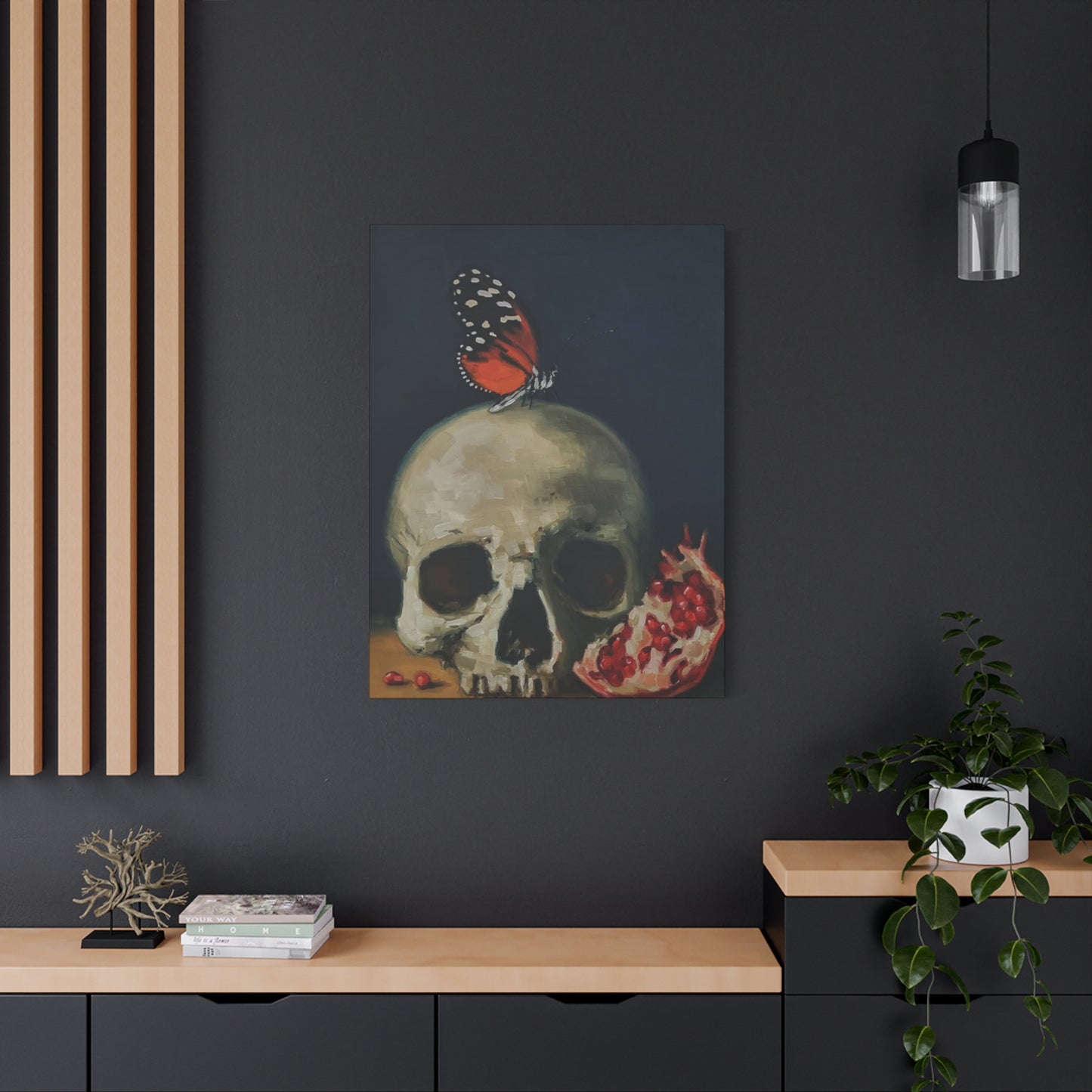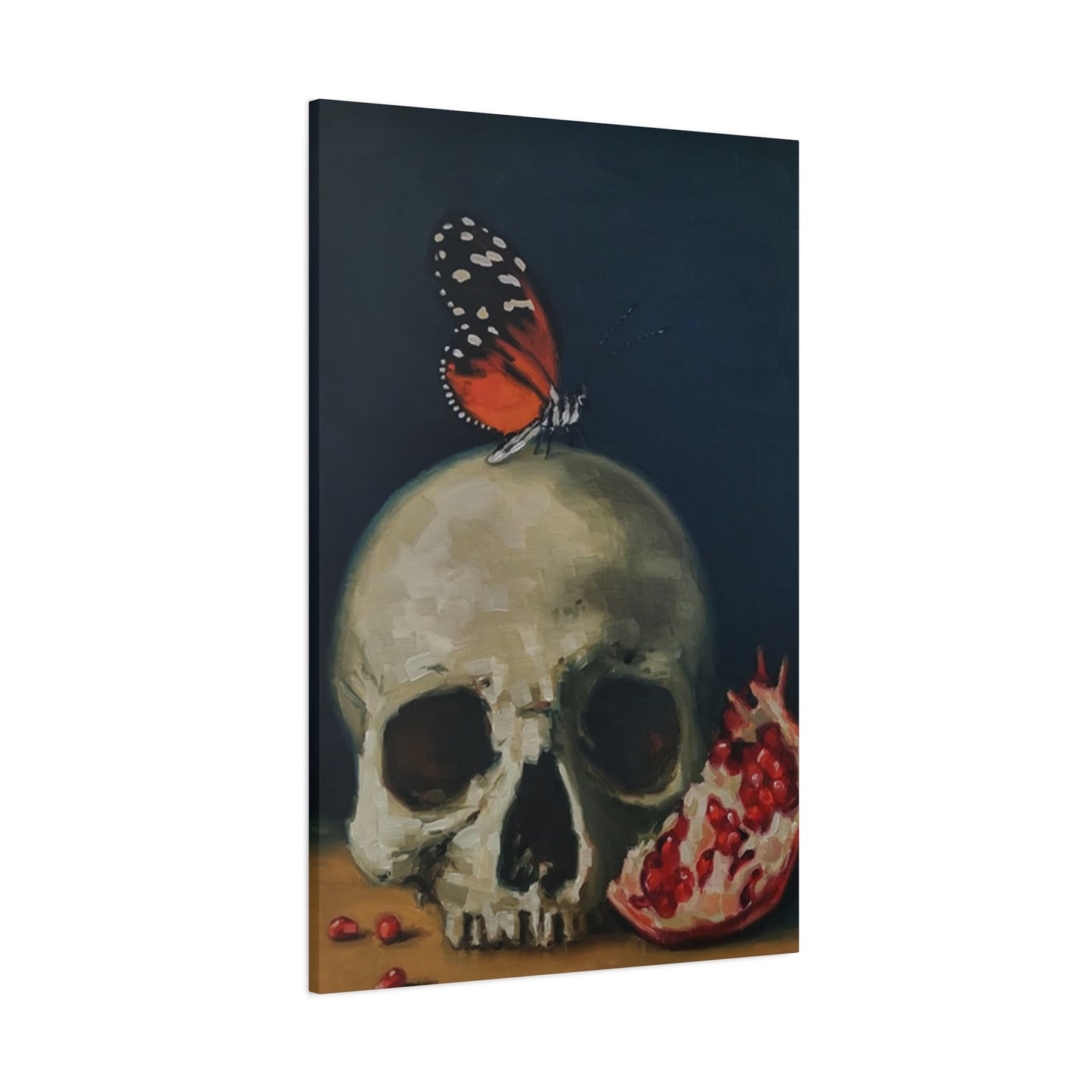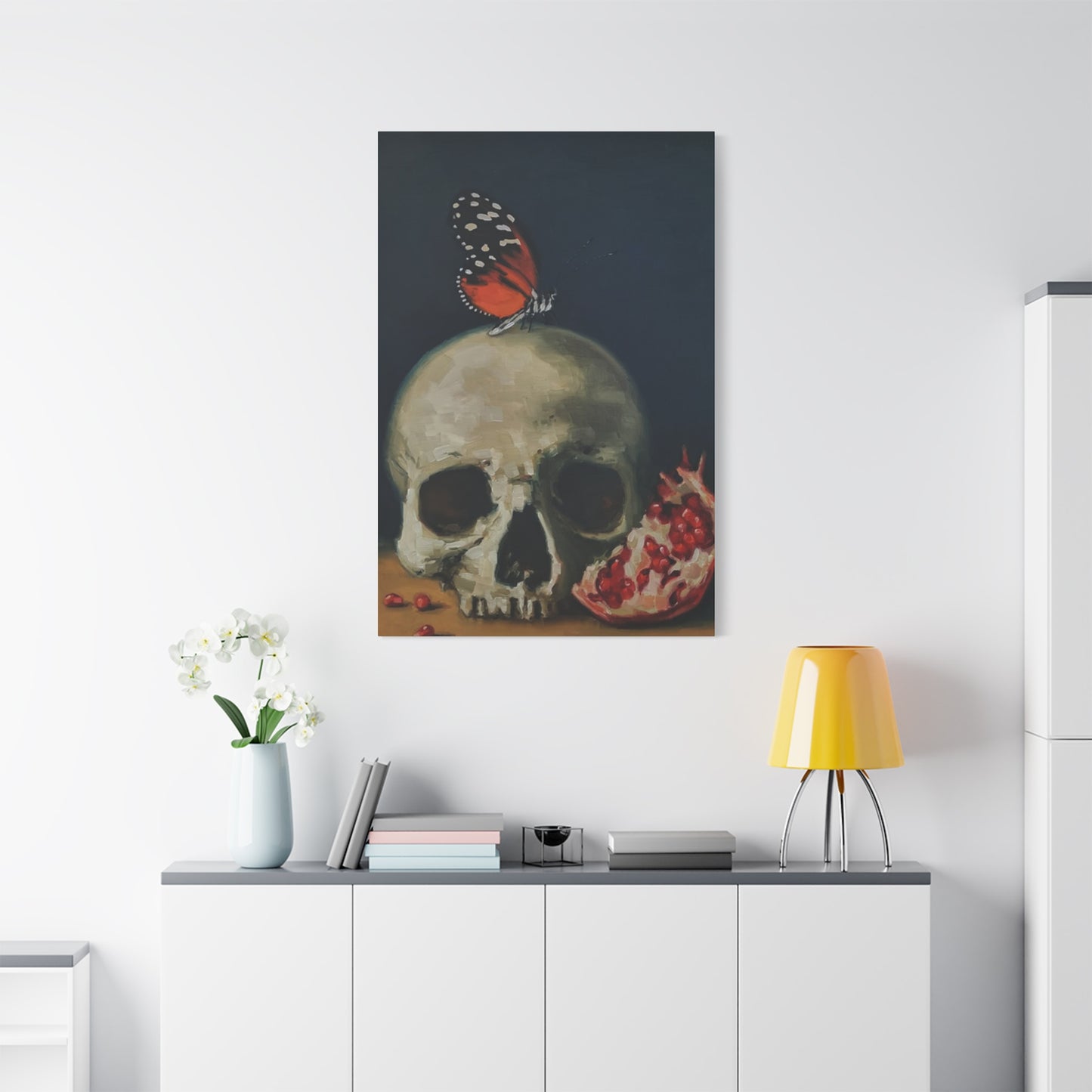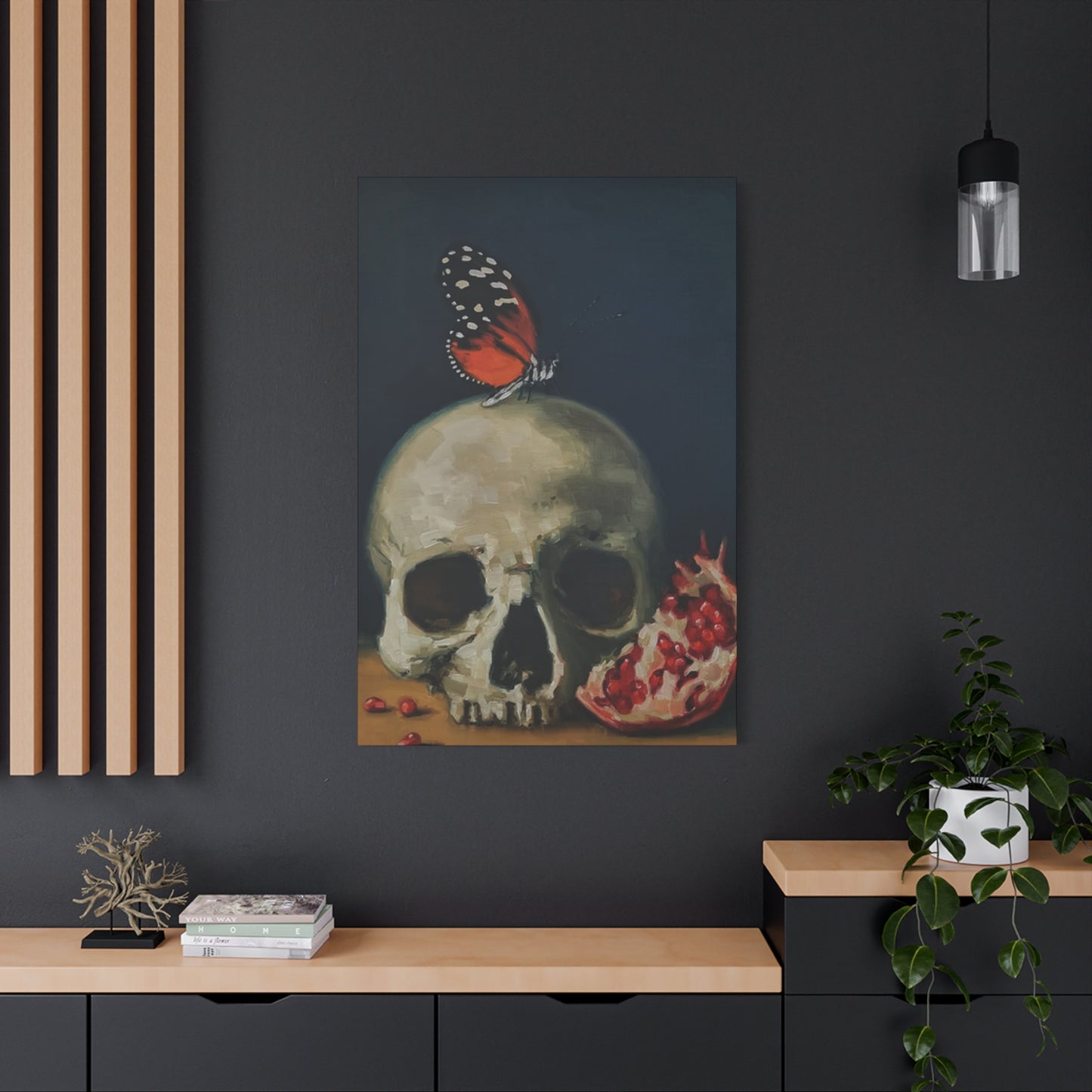Embracing Dark Beauty: 3D Butterfly Skull Wall Art Collection
The world of interior design has witnessed a remarkable surge in the popularity of unconventional art forms, and at the forefront of this movement stands the captivating realm of 3D butterfly skull art. This extraordinary fusion of delicate natural beauty and haunting mortality creates a visual paradox that draws viewers into a contemplative state, challenging traditional notions of what constitutes appealing home decor.
The allure of 3D butterfly skull art lies in its ability to capture the imagination through its striking juxtaposition of life and death, fragility and permanence. These remarkable pieces transform ordinary wall spaces into conversation starters, inviting observers to explore deeper meanings while appreciating the intricate craftsmanship involved in their creation. The three-dimensional aspect adds layers of visual interest, creating shadows and highlights that shift throughout the day as natural light moves across the surface.
Artists who specialize in this unique medium often draw inspiration from various cultural traditions that celebrate the cyclical nature of existence. The butterfly, universally recognized as a symbol of transformation and renewal, when paired with the skull's representation of mortality, creates a powerful artistic statement about the continuous cycle of life, death, and rebirth. This duality resonates with individuals who appreciate art that challenges conventional aesthetics while maintaining an undeniable beauty.
The craftsmanship required to create these pieces involves meticulous attention to detail, from the delicate wing patterns of the butterflies to the anatomical accuracy of the skull structures. Many artists employ mixed media techniques, incorporating materials such as metal, resin, fabric, and even preserved butterfly specimens to achieve the desired three-dimensional effect. The result is artwork that appears to emerge from the wall itself, creating an illusion of depth that flat paintings simply cannot achieve.
Modern interior designers increasingly recognize the value of incorporating such distinctive pieces into residential and commercial spaces. The 3D butterfly skull art serves as a focal point that can anchor an entire room's aesthetic, providing a foundation upon which other design elements can be layered. This type of artwork particularly appeals to those who seek to express their individuality through their living spaces, moving beyond mass-produced decor to embrace pieces that reflect personal philosophy and artistic appreciation.
The psychological impact of viewing 3D butterfly skull art extends beyond mere aesthetic pleasure. These pieces often evoke contemplation about mortality, beauty, transformation, and the impermanence of life. For many viewers, this art form serves as a daily reminder to embrace both the light and dark aspects of existence, encouraging a more balanced and thoughtful approach to daily life.
The versatility of 3D butterfly skull art allows it to complement various interior design styles, from gothic and industrial to eclectic and contemporary. The key lies in thoughtful placement and integration with surrounding elements. When properly positioned, these pieces can enhance the overall ambiance of a space, creating an atmosphere that is simultaneously sophisticated and edgy.
Merging Light and Shadow in Wall Decoration
The artistry of combining beauty and darkness in wall decor represents one of the most sophisticated approaches to interior design, challenging conventional notions of what makes a space inviting and aesthetically pleasing. This design philosophy embraces the concept that true beauty often emerges from contrast, and nowhere is this more evident than in the careful integration of elements that traditionally exist at opposite ends of the aesthetic spectrum.
When we examine the successful marriage of light and dark elements in wall decoration, we discover that the most compelling spaces are those that acknowledge the full spectrum of human emotion and experience. The incorporation of darker themes, such as those found in butterfly skull art, doesn't diminish the warmth or comfort of a space; rather, it adds depth and complexity that makes the environment more intellectually and emotionally engaging.
The strategic use of contrasting elements in wall decor creates visual tension that keeps the eye interested and engaged. Light elements might include soft textures, pale colors, and organic shapes, while darker elements could encompass bold geometric forms, deeper hues, and symbolic representations of mortality or mystery. When these opposing forces are balanced skillfully, they create a harmonious whole that is greater than the sum of its parts.
Professional interior designers often employ this principle when working with clients who desire spaces that reflect the complexity of modern life. Rather than defaulting to safe, neutral palettes, they explore how darker elements can be introduced to create spaces that feel authentic and personally meaningful. This approach requires a deep understanding of how different elements interact with one another and how lighting, color, and texture can be manipulated to achieve the desired emotional response.
The psychology behind combining beauty and darkness in decor draws from ancient philosophical traditions that recognize the interconnectedness of all aspects of existence. This approach to design acknowledges that humans are naturally drawn to complexity and contradiction, finding beauty in unexpected places and appreciating art that challenges their preconceptions.
In practical terms, achieving this balance requires careful consideration of proportion, placement, and context. A single dark element in an otherwise light space can serve as a powerful focal point, while multiple dark elements require more careful orchestration to avoid overwhelming the space. The key is to create a dialogue between opposing elements rather than allowing one to dominate the other.
The temporal aspect of this design approach should not be overlooked. Spaces that successfully combine beauty and darkness often change throughout the day as natural light shifts, creating different moods and emphasizing different aspects of the decor. Morning light might highlight the softer elements, while evening shadows could emphasize the more mysterious aspects of the design.
Color theory plays a crucial role in this design philosophy. The careful selection and placement of colors can either enhance or diminish the impact of contrasting elements. Neutral colors often serve as bridges between light and dark elements, while accent colors can be used to create additional layers of visual interest and emotional resonance.
Enhancing Spatial Dimensions with 3D Butterfly Skulls
The introduction of three-dimensional butterfly skull art into interior spaces represents a revolutionary approach to wall decoration that fundamentally alters how we perceive and interact with our living environments. Unlike traditional flat artwork that exists in two dimensions, these sculptural pieces project into the room, creating layers of visual interest that change dramatically based on viewing angle and lighting conditions.
The spatial impact of 3D butterfly skull art extends far beyond mere decoration, actively participating in the architectural dialogue of the space. These pieces create virtual expansion by drawing the eye into their dimensional depths, making rooms appear larger and more complex than their actual square footage might suggest. The interplay of positive and negative space around and within these artworks contributes to a more dynamic visual environment that engages viewers on multiple levels.
Lighting plays a particularly crucial role in maximizing the spatial impact of three-dimensional butterfly skull art. As light sources change throughout the day, these pieces cast varying shadows that create additional layers of visual information. Morning sunlight might emphasize certain sculptural elements, while afternoon light could highlight different aspects of the piece, essentially providing multiple artworks within a single installation.
The positioning of 3D butterfly skull art requires careful consideration of sight lines and traffic patterns within the space. These pieces work most effectively when placed where they can be appreciated from multiple angles, allowing viewers to discover new details and perspectives as they move through the room. Corner installations can be particularly effective, as they allow the artwork to wrap around the architectural elements and create a more immersive experience.
The psychological effect of dimensional artwork on spatial perception cannot be understated. Humans naturally respond to depth and dimension, and the presence of three-dimensional elements in a space triggers our spatial awareness systems in ways that flat artwork cannot. This heightened awareness can make spaces feel more alive and engaging, contributing to overall comfort and satisfaction with the environment.
Color selection in 3D butterfly skull art significantly impacts how these pieces interact with surrounding space. Darker colors tend to recede visually, creating the impression of depth and mystery, while lighter colors advance toward the viewer, creating a more immediate and intimate connection. The strategic use of color gradients within a single piece can create additional dimensional effects that enhance the overall spatial impact.
The scale relationship between 3D butterfly skull art and the surrounding architecture must be carefully considered to achieve optimal spatial enhancement. Oversized pieces can overwhelm smaller spaces, while undersized artwork might get lost in larger rooms. The goal is to create a sense of proportion that feels natural and harmonious while still making a strong visual statement.
Material selection also affects spatial perception. Reflective materials can multiply light sources and create the illusion of additional space, while matte surfaces absorb light and create more intimate, focused viewing experiences. The combination of different materials within a single piece can create complex spatial relationships that add visual richness to the environment.
Strategic Design Approaches for Butterfly Skull Wall Art
The successful integration of butterfly skull wall art into interior spaces requires a sophisticated understanding of design principles and a keen eye for aesthetic balance. These distinctive pieces demand thoughtful placement and styling to achieve their full potential as focal points while maintaining harmony with the overall design scheme of the space.
When approaching the styling of butterfly skull wall art, consider the existing architectural elements of the room. High ceilings can accommodate larger, more dramatic pieces that might overwhelm spaces with standard ceiling heights. The relationship between the artwork and architectural features such as windows, doorways, and built-in elements should be carefully evaluated to ensure that the piece enhances rather than competes with these structural components.
Color coordination plays a vital role in successful styling. While butterfly skull art often features dramatic contrasts between light and dark elements, the surrounding color palette should support and enhance these contrasts rather than creating visual chaos. Neutral backgrounds allow the artwork to command attention, while carefully selected accent colors can create harmonious connections between the art and other design elements in the space.
The selection of complementary furnishings and accessories requires careful consideration of style, scale, and material. Furniture with clean lines and interesting textures can provide an excellent foundation for butterfly skull wall art, while overly ornate pieces might compete for visual attention. The goal is to create a cohesive environment where each element supports and enhances the others.
Lighting design becomes particularly important when styling spaces that feature dimensional butterfly skull art. A combination of ambient, task, and accent lighting can be used to highlight different aspects of the artwork throughout the day and evening. Track lighting or adjustable fixtures allow for fine-tuning of the illumination to achieve the desired dramatic effect while ensuring that the piece remains visible and impactful in various lighting conditions.
The incorporation of natural elements can provide an interesting counterpoint to the more gothic aspects of butterfly skull art. Plants, natural wood furnishings, and organic textures can create a balanced environment that acknowledges both the natural inspiration and darker themes present in the artwork. This approach can make the space feel more approachable while maintaining its edgy character.
Textile selection offers another opportunity to support and enhance butterfly skull wall art. Fabrics with interesting textures, subtle patterns, or complementary color schemes can create visual connections between the artwork and other elements in the space. The key is to choose textiles that enhance rather than overwhelm the visual impact of the dimensional art pieces.
The arrangement of multiple butterfly skull art pieces requires careful attention to spacing, scale relationships, and visual flow. Gallery wall arrangements can be effective when executed thoughtfully, but they require consideration of how the dimensional aspects of individual pieces interact with one another and with the overall composition.
Seasonal styling adjustments can help maintain the visual interest of spaces featuring butterfly skull wall art. Subtle changes in accessories, lighting, or accent colors can refresh the environment while maintaining the core aesthetic established by the artwork. This approach allows for personal expression and seasonal variation without compromising the integrity of the overall design scheme.
Symbolic Interpretations in Decorative Art
The rich symbolism embedded within butterflies and skulls creates a powerful narrative foundation for decorative art that resonates across cultures and throughout history. These symbols, when combined in artistic expressions, create a complex dialogue about transformation, mortality, beauty, and the cyclical nature of existence that speaks to fundamental human experiences and philosophical questions.
Butterflies have long been recognized as universal symbols of transformation, rebirth, and the soul's journey through various stages of existence. In numerous cultures, the butterfly's metamorphosis from caterpillar to chrysalis to winged beauty represents the possibility of profound personal change and spiritual evolution. This symbolism makes butterfly imagery particularly appealing to individuals who have undergone significant life transitions or who embrace the concept of continuous personal growth and development.
The skull, conversely, serves as an unmistakable reminder of mortality and the finite nature of physical existence. Rather than representing morbidity or negativity, skulls in artistic contexts often serve as memento mori, encouraging viewers to contemplate the preciousness of life and the importance of living authentically and meaningfully. This symbolic tradition dates back centuries and appears in various forms across different artistic movements and cultural traditions.
When butterflies and skulls are combined in decorative art, they create a powerful symbolic synthesis that acknowledges the full spectrum of human experience. This combination suggests that beauty and death are not opposing forces but rather complementary aspects of a larger cosmic cycle. The juxtaposition invites viewers to consider how awareness of mortality can enhance appreciation for beauty and encourage more intentional living.
The symbolic richness of butterfly skull art makes it particularly appealing to individuals who value depth and meaning in their decorative choices. Rather than serving merely as aesthetic objects, these pieces function as daily reminders of important philosophical concepts and can serve as focal points for meditation and reflection. This symbolic dimension adds layers of personal meaning that can evolve and deepen over time.
Cultural variations in the interpretation of these symbols add additional complexity to butterfly skull art. While Western traditions might emphasize individual transformation and mortality, other cultures might interpret these symbols in the context of ancestral connections, spiritual guides, or cosmic balance. This cultural richness allows viewers from diverse backgrounds to find personal meaning and connection with the artwork.
The psychological impact of engaging with symbolic art extends beyond conscious interpretation to affect viewers on subconscious levels. The presence of meaningful symbols in living spaces can influence mood, thought patterns, and emotional responses in subtle but significant ways. This makes the selection and placement of symbolic art an important consideration in creating environments that support psychological well-being and personal growth.
Contemporary interpretations of traditional symbols allow artists to create works that speak to modern audiences while maintaining connections to historical and cultural traditions. Butterfly skull art represents this contemporary approach, taking ancient symbols and presenting them in new forms that address current aesthetic preferences and philosophical concerns while maintaining their essential symbolic power.
Optimal Placement Strategies for 3D Butterfly Skull Pieces
The strategic positioning of 3D butterfly skull pieces within interior spaces requires careful consideration of multiple factors including lighting conditions, viewing angles, architectural features, and the overall flow and function of the room. These dimensional artworks possess unique spatial requirements that differ significantly from traditional flat wall art, demanding a more sophisticated approach to placement and installation.
Entryways and foyers present excellent opportunities for 3D butterfly skull art placement, as these spaces naturally serve as introduction zones where guests form their first impressions of the home's aesthetic character. The dimensional nature of these pieces creates immediate visual impact and establishes the tone for the rest of the interior design scheme. However, placement in these areas requires careful attention to scale and proportion to avoid overwhelming visitors while still making a memorable statement.
Living room placement strategies should consider the primary sight lines and conversation areas within the space. Positioning dimensional butterfly skull art where it can be appreciated from multiple seating areas maximizes its impact and ensures that it functions effectively as a conversation starter. The relationship between the artwork and other focal points such as fireplaces, entertainment centers, or large windows must be carefully balanced to create a harmonious overall composition.
Bedroom installations require sensitivity to the psychological impact of the artwork on rest and relaxation. While some individuals find the philosophical symbolism of butterfly skull art conducive to contemplation and peaceful reflection, others might prefer to reserve these pieces for more public areas of the home. When placed in bedrooms, these artworks often work best when positioned where they can be appreciated during waking hours but don't dominate the sleep environment.
Dining room placement can be particularly effective for butterfly skull art, as these spaces naturally lend themselves to deeper conversations and shared experiences. The dimensional nature of these pieces can enhance the intimate atmosphere of dining spaces while providing visual interest that elevates casual meals into more memorable experiences. Lighting considerations become particularly important in dining areas, where the interplay between natural and artificial light sources can dramatically affect the artwork's appearance throughout the day and evening.
Home office and study environments can benefit significantly from the presence of 3D butterfly skull art, as these pieces often inspire contemplation and creative thinking. The symbolic content can serve as daily reminders of life's finite nature and the importance of pursuing meaningful work and creative expression. Placement should consider the primary work areas and ensure that the artwork enhances rather than distracts from productivity and focus.
Hallway installations offer unique opportunities for creating dramatic visual experiences as viewers move through the space. The changing perspectives created by movement can reveal different aspects of dimensional butterfly skull art, creating an almost cinematic experience that transforms ordinary transitional spaces into memorable architectural moments. Lighting design becomes particularly important in these applications to ensure proper visibility and safety.
Gallery wall arrangements featuring multiple 3D butterfly skull pieces require sophisticated planning to achieve visual harmony while maintaining the individual impact of each piece. Consideration must be given to the interaction between the dimensional aspects of different pieces, ensuring that shadows and spatial relationships enhance rather than interfere with the overall composition. The spacing between pieces becomes critical in preventing visual competition while maintaining coherent thematic unity.
Seasonal and lighting considerations play crucial roles in placement decisions. Pieces positioned near windows must be evaluated for how changing seasonal light conditions will affect their appearance and impact. Similarly, the relationship between natural and artificial lighting sources should be carefully planned to ensure that the artwork remains visually compelling throughout various lighting scenarios.
Harmonizing Gothic and Natural Design Elements
The successful integration of gothic and natural elements in interior design represents one of the most challenging and rewarding approaches to creating spaces that are both dramatically striking and organically comfortable. This design philosophy requires a deep understanding of how seemingly opposing aesthetic traditions can be woven together to create environments that celebrate both the mysterious beauty of gothic design and the life-affirming qualities of natural elements.
Gothic design elements traditionally emphasize verticality, dramatic contrasts, ornate detailing, and symbolic content that explores themes of spirituality, mortality, and transcendence. When incorporating these elements into contemporary interior spaces, designers must consider how to maintain the essential character and emotional impact of gothic aesthetics while adapting them to modern living requirements and personal comfort needs.
Natural elements in design encompass organic shapes, earth-derived materials, botanical motifs, and color palettes inspired by the natural world. These elements typically create feelings of calm, connection to the earth, and harmony with natural cycles. The challenge lies in combining these life-affirming natural elements with the more introspective and sometimes somber aspects of gothic design to create a balanced and livable environment.
The key to successful integration lies in identifying common ground between these two aesthetic approaches. Both gothic and natural design traditions emphasize craftsmanship, attention to detail, and deep symbolic meaning. Both approaches also celebrate the beauty found in complexity and the importance of creating environments that support reflection and personal growth. These shared values provide a foundation for creating harmonious combinations.
Color selection plays a crucial role in bridging gothic and natural elements. Earth tones such as deep browns, forest greens, and stone grays can serve as neutral foundations that support both gothic drama and natural warmth. Rich jewel tones can add gothic sophistication while maintaining connections to natural mineral and gemstone colors. The strategic use of metallic accents can enhance gothic elements while reflecting natural light and creating warmth.
Material combinations offer extensive opportunities for blending these design approaches. Natural stone, aged wood, and wrought iron can serve gothic aesthetic goals while maintaining clear connections to natural origins. The patina and wear patterns that develop on natural materials over time can enhance the authentic gothic atmosphere while celebrating the natural aging process that connects all living things.
Textural contrasts become particularly important when mixing gothic and natural elements. Smooth, polished surfaces can represent gothic sophistication, while rough, organic textures can maintain natural connections. The interplay between these different surface qualities creates visual and tactile interest that engages multiple senses and adds depth to the overall design experience.
Lighting design offers perhaps the greatest opportunity for successful integration of gothic and natural elements. Natural light filtered through interesting architectural elements can create the dramatic shadows and highlights that gothic design celebrates while maintaining connection to natural daily and seasonal cycles. Artificial lighting can be designed to enhance both the mysterious aspects of gothic elements and the warm, welcoming qualities of natural materials.
Plant integration requires careful selection of species and placement strategies that complement rather than compete with gothic elements. Dramatic foliage plants, flowering specimens with rich colors, and plants with interesting architectural forms can enhance gothic atmospheres while maintaining strong natural presence. The containers and display methods for plants should be selected to bridge the aesthetic gap between gothic and natural design approaches.
Crafting Impactful Statement Pieces with 3D Wall Decor
The creation of bold statement pieces using three-dimensional wall decor represents a sophisticated approach to interior design that goes far beyond traditional flat artwork applications. These dimensional installations have the power to transform ordinary walls into dramatic focal points that command attention, spark conversation, and fundamentally alter the character and perceived scale of interior spaces.
The development of effective statement pieces begins with understanding the relationship between the artwork and the architectural context in which it will be placed. Three-dimensional wall decor must work in harmony with existing structural elements while possessing sufficient visual strength to establish its own presence and impact. This balance requires careful consideration of scale, proportion, and positioning to achieve maximum effect without overwhelming the space.
Material selection plays a fundamental role in creating impactful 3D wall installations. The choice of materials affects not only the visual appearance of the piece but also its interaction with light, its perceived weight and substance, and its ability to create dramatic shadows and highlights. Mixed media approaches often prove most effective, combining materials with different surface qualities, colors, and reflective properties to create complex visual experiences.
The dimensional aspect of these statement pieces creates opportunities for visual impact that simply cannot be achieved with flat artwork. The projection of elements into the room's space creates physical presence that engages viewers on a visceral level, while the interplay of positive and negative space adds layers of visual complexity that reveal themselves gradually as viewing conditions change throughout the day.
Color strategies for dimensional statement pieces must consider how hues will appear under different lighting conditions and from various viewing angles. The three-dimensional nature of these pieces means that colors may appear different depending on the viewer's position and the direction of available light. This complexity can be used to advantage, creating pieces that appear to change character as lighting conditions shift throughout the day and evening.
The psychological impact of bold dimensional wall decor extends beyond mere visual appreciation to affect viewers' emotional and physiological responses to the space. Large, dramatic installations can create feelings of awe and wonder, while more intimate dimensional pieces might encourage closer inspection and contemplation. Understanding these psychological effects allows designers to create environments that support specific emotional goals and lifestyle needs.
Installation considerations for dimensional wall decor require careful attention to structural support, safety, and maintenance access. These pieces often require more substantial mounting systems than traditional flat artwork, and their projecting elements must be positioned to avoid interference with room function and traffic patterns. Professional installation may be necessary to ensure safety and optimal visual impact.
The integration of lighting systems into or around dimensional wall decor can dramatically enhance their statement-making potential. Strategically placed accent lights can emphasize sculptural elements, create dramatic shadow patterns, and ensure that the artwork remains visually compelling during evening hours. The lighting design should be considered an integral part of the overall artistic statement rather than an afterthought.
Maintenance and longevity considerations are particularly important for dimensional wall decor due to their complex surface geometries and material combinations. Dust accumulation, cleaning access, and material degradation over time must all be considered during the design and installation process to ensure that these statement pieces maintain their visual impact and structural integrity over the long term.
Thoughtful Gift Selection for Admirers of Distinctive Art
The process of selecting meaningful gifts for individuals who appreciate unique and edgy artwork requires a deep understanding of their aesthetic preferences, lifestyle needs, and personal philosophy regarding art and design. Those drawn to distinctive pieces such as 3D butterfly skull art typically value originality, symbolic depth, and craftsmanship over mass-produced decorative items, making gift selection both challenging and rewarding.
Understanding the recipient's existing collection and aesthetic preferences provides crucial insight for gift selection. Individuals who collect edgy art often have specific themes, materials, or symbolic content that particularly resonate with them. Observing their current displays, noting the artists they follow, and paying attention to their comments about specific pieces can provide valuable guidance for selecting gifts that will complement and enhance their existing collection.
The consideration of scale and placement opportunities within the recipient's living space becomes particularly important when selecting dimensional artwork gifts. Unlike books or small decorative objects, dimensional art pieces require specific spatial requirements and may need professional installation. Understanding the recipient's available wall space, lighting conditions, and overall interior design scheme helps ensure that the gift will be both appreciated and appropriately displayed.
Budget considerations for distinctive art gifts can vary dramatically depending on the artist, materials, size, and complexity of the piece. However, value in art collecting extends far beyond simple monetary considerations to encompass factors such as artistic merit, uniqueness, craftsmanship quality, and personal meaning. A smaller piece by an emerging artist might provide more long-term satisfaction than a larger mass-produced item at a similar price point.
The timing of art gifts can significantly impact their reception and appreciation. Major life events such as new home purchases, career transitions, or personal milestones often represent ideal opportunities for meaningful art gifts. These occasions provide natural connections between the symbolic content of the artwork and the recipient's current life experiences, making the gift more personally significant.
The presentation and accompanying information can greatly enhance the impact of art gifts. Providing background information about the artist, the creative process, or the symbolic meaning of the piece adds educational value and demonstrates the thoughtfulness of the selection. Professional presentation, including appropriate packaging and installation guidance, shows respect for both the artwork and the recipient.
Consideration of the recipient's lifestyle and living situation helps ensure that art gifts will be practical as well as meaningful. Factors such as frequent relocations, rental housing restrictions, or shared living spaces might influence the most appropriate types of art gifts. Smaller, more portable pieces might be more suitable for some recipients, while others might appreciate larger statement pieces for permanent installations.
The exploration of emerging artists and new artistic movements can provide opportunities to select gifts that will appreciate in value over time while supporting the development of contemporary art. Recipients who appreciate edgy and unique art often value the opportunity to discover new artists and may particularly appreciate gifts that introduce them to innovative approaches or techniques.
Custom or commissioned artwork represents the ultimate personalized gift for art enthusiasts. Working with artists to create pieces that incorporate specific themes, colors, or symbolic elements meaningful to the recipient demonstrates exceptional thoughtfulness and creates truly one-of-a-kind gifts. However, commissioned pieces require longer lead times and clear communication about expectations and requirements.
Gift certificates or memberships to art organizations, galleries, or online platforms can provide recipients with the freedom to select pieces that perfectly match their current needs and preferences while still demonstrating support for their artistic interests. This approach works particularly well when the giver is uncertain about specific preferences or when the recipient is in the process of developing their collection.
Maintenance and Preservation of 3D Butterfly Skull Wall Art
The proper care and maintenance of three-dimensional butterfly skull wall art requires specialized knowledge and techniques that differ significantly from those used for traditional flat artwork. The complex geometries, mixed materials, and dimensional elements that make these pieces visually compelling also create unique preservation challenges that must be addressed to ensure long-term beauty and structural integrity.
Regular cleaning protocols for dimensional artwork must accommodate the varied surfaces, textures, and materials commonly found in 3D butterfly skull pieces. Dust accumulation in recessed areas and around projecting elements requires careful attention, as standard dusting methods may not reach all surfaces effectively. Soft-bristled brushes, compressed air systems, and specialized vacuum attachments designed for delicate surfaces often prove most effective for routine maintenance.
The assessment of material compatibility becomes crucial when developing cleaning and maintenance procedures for mixed-media dimensional artwork. Different materials may require different cleaning agents and techniques, and some combinations of materials and cleaning products can cause chemical reactions that damage the artwork. Professional conservation consultation may be necessary to develop appropriate maintenance protocols for complex pieces.
Environmental control plays a particularly important role in preserving dimensional butterfly skull art due to the variety of materials typically used in these pieces. Temperature fluctuations, humidity changes, and exposure to direct sunlight can cause differential expansion and contraction in different materials, potentially leading to structural stress, cracking, or delamination. Maintaining stable environmental conditions helps prevent these problems and extends the artwork's lifespan.
The monitoring of structural integrity requires regular inspection of mounting systems, adhesive bonds, and mechanical connections within dimensional artwork. The projecting elements of 3D pieces create leverage forces that can stress mounting points over time, particularly in environments subject to vibration from traffic, construction, or mechanical systems. Early detection of loosening or deterioration allows for preventive maintenance that can prevent more serious damage.
Light exposure management becomes particularly complex for dimensional artwork due to the varying angles and orientations of different surfaces within a single piece. Some elements may receive direct light exposure while others remain in shadow, creating differential fading or material degradation patterns. UV-filtering window treatments, adjustable lighting systems, and rotation schedules can help manage light exposure and prevent uneven aging.
Proper handling procedures for dimensional artwork require understanding of stress points, fragile elements, and safe gripping locations. The complex geometries of 3D butterfly skull art can create unexpected weak points where handling stress might cause damage. Professional art handling training or consultation can help establish safe procedures for any necessary movement or repositioning of these pieces.
Documentation of the artwork's condition, including detailed photography from multiple angles, helps establish baseline conditions and track any changes over time. This documentation becomes particularly valuable for insurance purposes and can guide future conservation decisions. Regular condition assessments should be scheduled and documented to maintain comprehensive preservation records.
The development of emergency response procedures for dimensional artwork addresses potential risks such as seismic activity, water damage, or accidental impact. The projecting elements of 3D pieces may be more vulnerable to damage during emergencies, and their dimensional nature may complicate rapid protection or removal procedures. Having clear emergency protocols in place can minimize damage during crisis situations.
Professional conservation services may be required for significant cleaning, repair, or restoration of dimensional butterfly skull art. The specialized skills required for working with mixed media dimensional pieces often exceed those of general art restoration services. Establishing relationships with qualified conservators before problems arise ensures that appropriate expertise will be available when needed.
Storage considerations for dimensional artwork require specialized solutions that protect projecting elements while maintaining structural stability. Custom storage systems, protective covers, and climate-controlled environments become particularly important for valuable pieces during extended periods of non-display. Proper storage techniques can prevent damage during renovations, relocations, or seasonal display changes.
Historical Context and Cultural Evolution
The emergence of butterfly skull art as a significant contemporary art form represents the latest chapter in a long historical tradition of memento mori and symbolic artwork that has evolved across cultures and through centuries of human artistic expression. Understanding this historical context provides deeper appreciation for the contemporary iterations of these themes and reveals the enduring human fascination with mortality, transformation, and the intersection of beauty and death.
Ancient civilizations across the globe incorporated skull imagery into their artistic and religious practices, recognizing the skull as a powerful symbol of mortality, wisdom, and connection to ancestral spirits. Egyptian, Aztec, Celtic, and numerous other cultures developed sophisticated artistic traditions that celebrated rather than feared death, viewing it as a natural transition rather than an ending. These early traditions established the foundational symbolism that continues to influence contemporary artists working with skull imagery.
The medieval period saw the development of formalized memento mori traditions within European art, where skull imagery served as religious and philosophical reminders of life's fleeting nature. Gothic cathedrals incorporated carved skulls and bones into their architectural elements, while illuminated manuscripts often featured elaborate skull decorations alongside religious texts. This period established many of the aesthetic and symbolic conventions that continue to influence gothic-inspired art today.
Renaissance artists refined the memento mori tradition, incorporating skull imagery into portraits, still life paintings, and religious works with increasing sophistication and symbolic complexity. Artists such as Hans Holbein and Giuseppe Arcimboldo created works that masterfully balanced beauty and mortality themes, establishing artistic precedents that continue to inspire contemporary artists working with similar subject matter.
The butterfly's symbolic significance developed along parallel cultural lines, with various civilizations recognizing its transformation from caterpillar to winged creature as a powerful metaphor for spiritual evolution, rebirth, and the soul's journey. Greek mythology associated butterflies with the psyche and soul, while many indigenous cultures viewed butterflies as messengers between the physical and spiritual worlds. These symbolic associations provided rich material for artists seeking to explore themes of transformation and transcendence.
The Victorian era witnessed a particular fascination with both mortality symbolism and natural history, leading to elaborate mourning traditions and extensive collections of natural specimens including preserved butterflies. Victorian parlors often displayed intricate arrangements combining natural specimens with symbolic objects, creating aesthetic environments that celebrated both natural beauty and philosophical contemplation of mortality.
The twentieth century saw various artistic movements rediscovering and reinterpreting traditional symbolic imagery for contemporary audiences. Surrealist artists such as Salvador Dalí incorporated skull and transformation imagery into their explorations of the subconscious mind, while Mexican artists continued developing Day of the Dead traditions that celebrated death as part of life's natural cycle.
Contemporary butterfly skull art represents a synthesis of these various historical traditions, adapted for modern aesthetic sensibilities and living environments. Today's artists draw upon centuries of symbolic development while incorporating new materials, techniques, and dimensional approaches that were unavailable to earlier generations. This evolution demonstrates the enduring power of these symbolic themes to speak to fundamental human experiences across cultural and temporal boundaries.
The globalization of art markets and cultural exchange has allowed contemporary butterfly skull art to incorporate influences from diverse cultural traditions, creating works that speak to universal human experiences while respecting the specific cultural contexts from which various symbolic elements derive. This cross-cultural synthesis has enriched the symbolic vocabulary available to contemporary artists and expanded the potential meanings and interpretations of butterfly skull artwork.
The digital age has facilitated new forms of artistic exploration and distribution, allowing artists working with butterfly skull themes to reach global audiences and collaborate across traditional cultural boundaries. Online platforms have created communities of artists and collectors who share interests in symbolic art, fostering continued evolution and innovation within this artistic tradition.
Conclusion:
The 3D Butterfly Skull Wall Art Collection masterfully fuses themes of life, death, transformation, and beauty, creating a striking visual statement that challenges traditional notions of decor. By combining the delicate elegance of butterflies with the stark symbolism of skulls, this collection embraces the complexity of dark beauty—celebrating the coexistence of fragility and strength, decay and renewal.
The three-dimensional aspect adds a captivating depth and realism, making each piece an immersive experience that draws viewers in and invites reflection. These artworks are perfect for those who appreciate bold, unconventional aesthetics and want to infuse their spaces with meaningful, thought-provoking decor.
Ideal for modern, gothic, or eclectic interiors, the collection adds drama and sophistication, serving as a powerful focal point in living rooms, bedrooms, studios, or creative spaces. Beyond their visual appeal, these pieces evoke introspection about life’s cycles, transformation, and the beauty found in contrasts.
In essence, the 3D Butterfly Skull Wall Art Collection is more than just decoration—it is an artistic exploration of dark elegance and resilience. By embracing this unique fusion, you invite a sense of mystery, depth, and poetic balance into your home, making your space truly unforgettable.

















